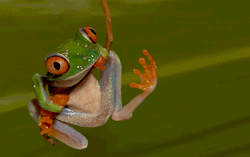Re: Rastr
Posted: 2012-02-20T21:22:51-07:00
I understand. You want an interleaving of 10 images (every 10th column from a different image) at very high resolutions to generate 3-D plastic lens images. Nice never had this before.goldskif wrote:This is all you need for volumetric 3D photos.
Is 8-12 photos (usually 10) , with a slight displacement.
Then all of the photos are processed.
This raster of each picture is cut 1 out of 10 bar.
Cut out the strips are formed near the overall picture.
Printing.
On top of glued lenticular image.
Through the lenses of the eyes see strips like 3D photo
Hmm if you can black out all but the appropriate column of pixels from each o fthe 10 images, you can then simple 'add' the images together to interleave them.
That means you need a list if 10 tiling masks, which are then applied to 10 images, and then those 10 added together.
this is actually more like 'animation' work whcih deals with 'lists of images'.
Initial mask (one column in 10)
Code: Select all
convert -size 1x1 xc:white -size 9x1 xc:black +append mask_1_in_10.gifthis uses animated image rolling to do the task
http://www.imagemagick.org/Usage/anim_mods/#distort
Code: Select all
convert mask_1_in_10.gif -duplicate 9 -virtual-pixel tile \
-distort SRT '0,0 1 0 %[fx:w*t/n],0' \
masks_10.gifhttp://www.imagemagick.org/Usage/anim_m ... tter_tiles
Set your 'viewport' size to your image size.
then 'layer compose' the two lists together...
http://www.imagemagick.org/Usage/anim_mods/#composite
and finally 'add merge' the images into a single result
http://www.imagemagick.org/Usage/layers/#eval-seq_add
Code: Select all
convert images_*.png null: \
\( masks_10.gif -virtual-pixel tile \
-set option:distort:viewport 180x180 -distort SRT 0 \
\) -compose multiply -layers composite -compose over \
-evaluate-sequence add column_interleaved_result.pngCode: Select all
convert images_*.png null: \
\( -size 1x1 xc:white xc:white -size 9x1 xc:black +append \
-duplicate 9 -virtual-pixel tile -distort SRT '0,0 1 0 %[fx:w*t/n],0' \
-set option:distort:viewport 180x180 -distort SRT 0 \
\) -compose multiply -layers composite -compose over \
-evaluate-sequence add column_interleaved_result.pngthe '180x180' should match the size of your input images.

